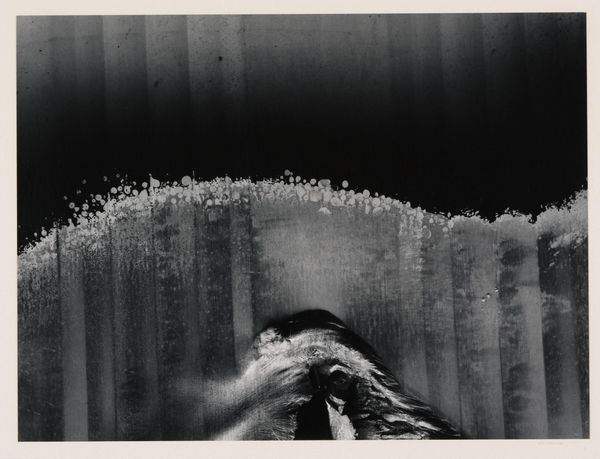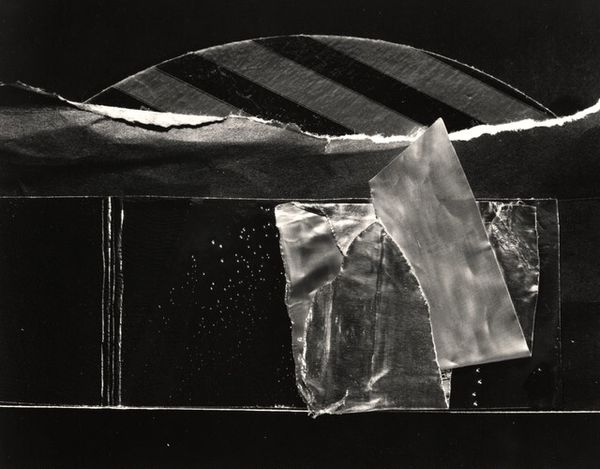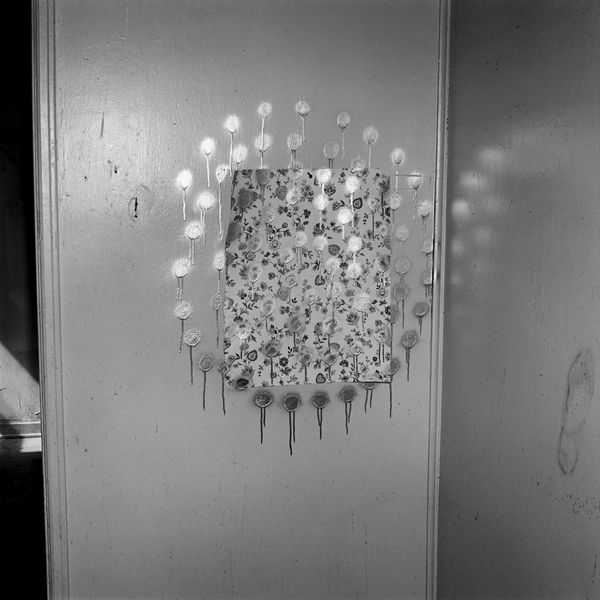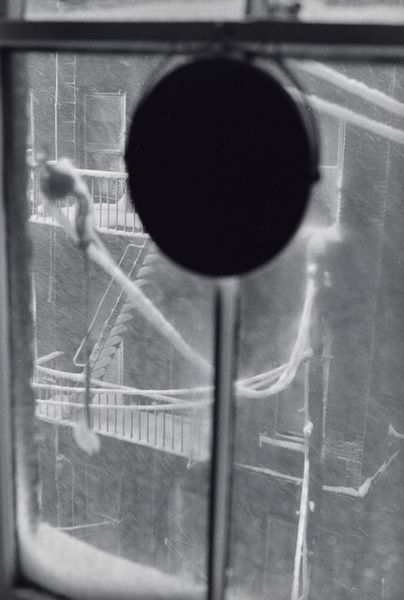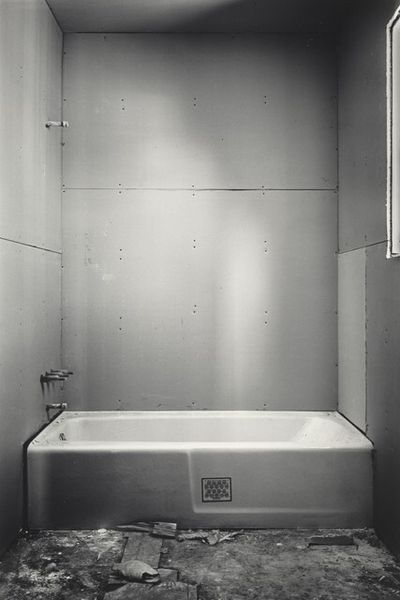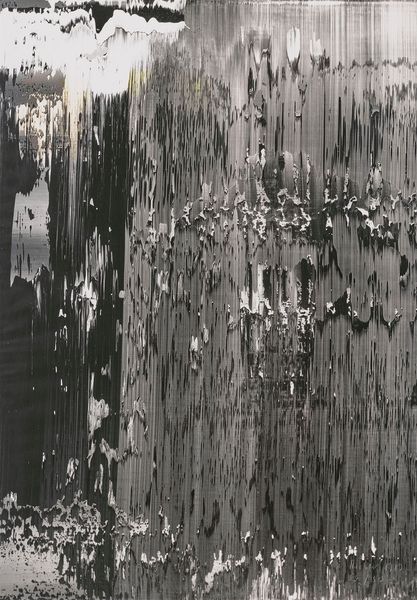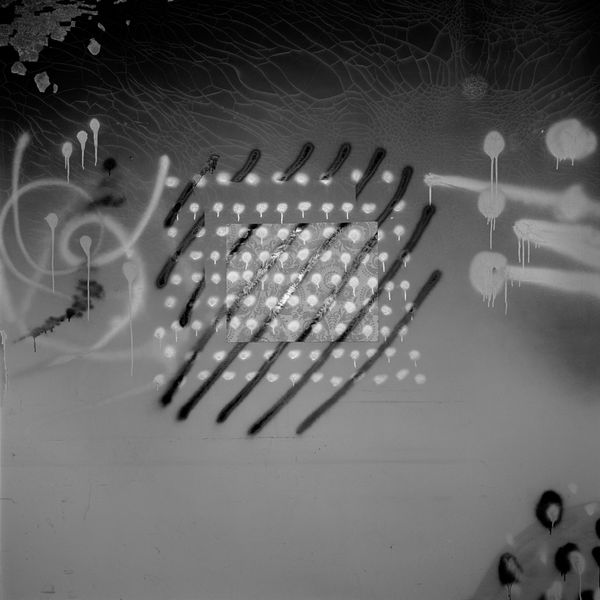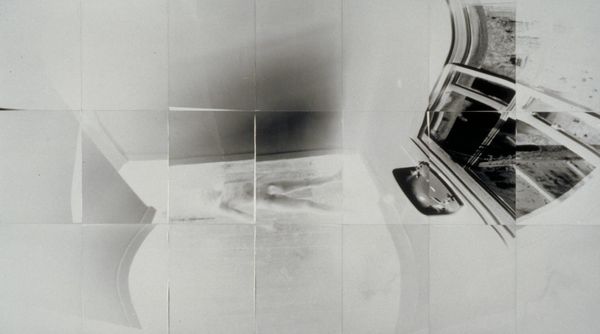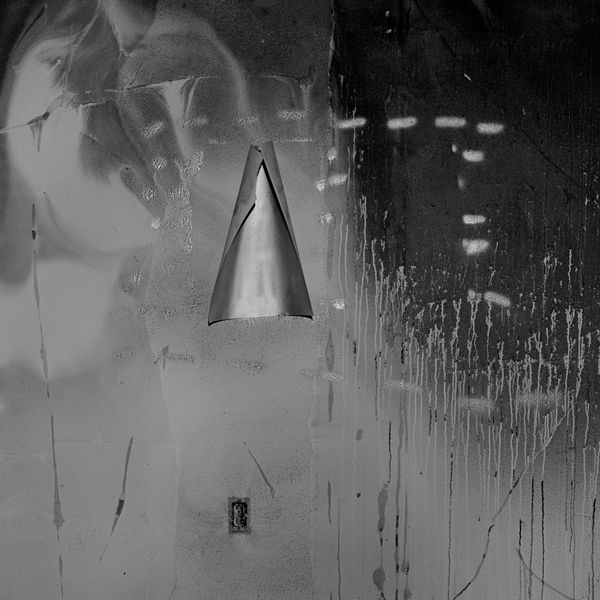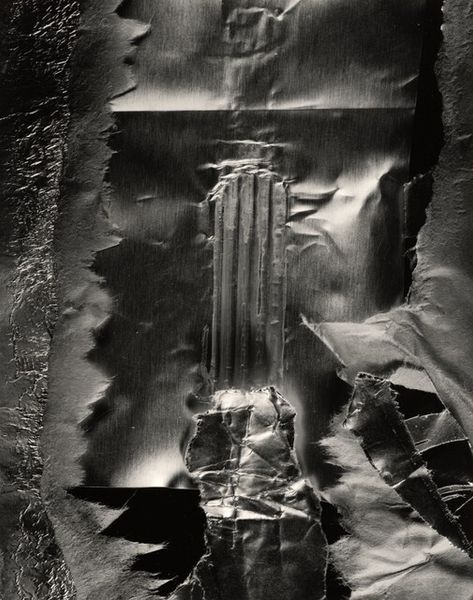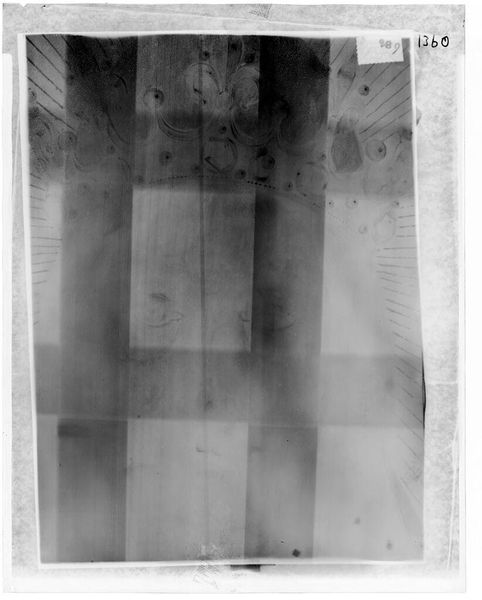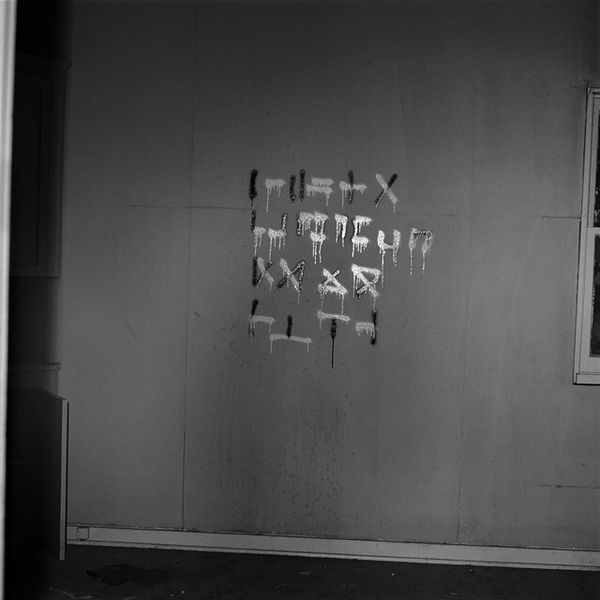
#
blurred colour hue
#
blurry
#
warm monochrome
#
blurred
#
abstract form
#
monochrome photography
#
blurred composition
#
blurriness
#
monochrome
#
metal texture
Dimensions: image: 34.93 × 34.93 cm (13 3/4 × 13 3/4 in.) mat: 62.23 × 59.69 cm (24 1/2 × 23 1/2 in.) framed: 64.14 × 61.6 × 3.81 cm (25 1/4 × 24 1/4 × 1 1/2 in.)
Copyright: National Gallery of Art: CC0 1.0
Curator: What an intriguing image. This is "74V13" by John Divola, likely created sometime between 1973 and 1993. The monochrome and soft focus give it an almost ethereal quality. Editor: Ethereal? I see neglect, almost violence, in this space. The peeling paint and streaking... is that water damage? There’s a definite feeling of abandonment that resonates strongly. Curator: Let’s think about Divola’s wider practice. He often explored marginalized spaces, like abandoned buildings, drawn to the interplay of decay and human intervention. Do you think the composition reinforces this idea? Editor: Absolutely. The geometric structure imposed by the corner contrasts with the chaotic disintegration around it. The rigid angles are fighting a losing battle against entropy. I wonder about the materials used to construct this space and their degradation over time. Was it built cheaply, for temporary use? How did its social function lead to this state? Curator: That's an interesting point. The repetitive shapes hint at industrial architecture, perhaps even a military site. Considering the socio-political context of the late 20th century, could the location be charged with cultural significance relating to Cold War anxieties? How might the image comment on social structures? Editor: Possibly. This makes me wonder about the labor involved in the initial construction and the subsequent labor—or lack thereof—in its upkeep. The blurring feels almost intentional, obscuring any details that would link it definitively to a specific site or purpose. Was this a conscious decision? What’s the value in seeing without resolving, and leaving the viewer with so many questions? Curator: Divola certainly encourages interpretation. It is like a blank canvas inviting projection. Perhaps he wants us to consider the ephemeral nature of our own structures, both physical and societal. It feels like he seeks to provoke, challenging conventional notions of photographic representation. Editor: Well, I think it powerfully represents entropy and societal decay. A grim, but important, statement. Curator: Yes, it's definitely a poignant snapshot of time and transformation. Editor: Agreed, an enduring testament to material transience and the human impact upon our constructed world.
Comments
No comments
Be the first to comment and join the conversation on the ultimate creative platform.
